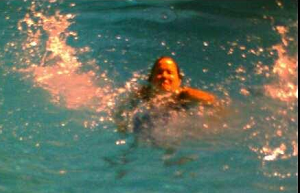You think you’re bulletproof out in the lake? Think again…
______________________
Drowning is easy. In fact, it’s so easy that over 3,000 people annually in the U.S. succumb to it.
The process of drowning is very straightforward:
1. Water enters the lungs of a person triggering automatic spasms to the larynx
2. These spasms temporarily seal the air pipe in order to prevent additional liquid from entering the lungs (a natural defense mechanism)
3. This “choking” sensation triggers a panic response which accelerates the person’s heart rate
4. An accelerated heart rate coupled with a sealed air pipe causes generalized hypoxia, an inadequate supply of oxygen to the body as a whole
5. Deprived of oxygen, the person’s cells shift to anaerobic metabolism and flood the muscles with lactic acid, causing rapid fatigue which quickly leads to exhaustion
6. Unable to remain afloat, the person inhales additional water which accelerates the above cycle
7. The continuing oxygen deprivation leads to cerebral hypoxia causing unconsciousness
8. As the person loses consciousness, the larynx relaxes allowing the lungs to fill with water
End Game – Unless rescued at this point, the person dies from either advanced cerebral hypoxia or myocardial infarction (heart attack)
Not drowning is also just as easy.
The key is to interrupt this lethal cascade of events as early as possible – and one of the best ways to do this is to become comfortable with the technique known as drownproofing.
One of my biggest beefs with the endurance sports community is that they never seem to teach this as part of their open water swim training (as least I’ve never seen it being taught anywhere). Instead, they teach you how to tread water, swim faster, sight in open water, and navigate the chaotic scrum of the swim start.
But never how not to drown in the first place.
Whenever I work one-on-one with a swimmer for an open water lesson, the first thing we go over is drownproofing. I make sure they’re comfortable handling any situation that might potentially trigger the drowning process.
And drownproofing is really easy to learn – even a small child can do it:
So the next time you’re out in the open water with your swimming or triathlon training group, be sure to ask everyone whether or not they know how to drownproof.
And if the coaches don’t teach it – or if they don’t know what you’re talking about – you have my permission to nail them on it…
_________________________________________________________________
GET THE EDGE OVER THE PACK!
Call us at +1 (312) 927-0299 or send us an email, and we’ll talk about your specific needs and how we can tailor a training session just for you.
